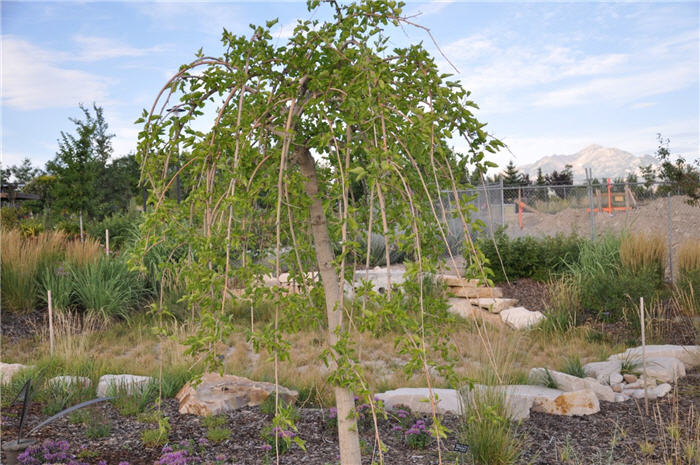| Botanical Name: Morus alba 'Chaparral' | |
| Common Name: Chaparrel Mulberry |

-
Anatomy
-
Culture
-
Design
Plant Type
Tree
Height Range
6-12'
Flower Color
n/a
Flower Season
n/a
Leaf Color
Green
Bark Color
Brown
Fruit Color
n/a
Fruit Season
n/a
Sun
Full, Half
Water
Low, Medium
Growth Rate
Fast
Soil Type
Clay, Loam, Rocky
Soil Condition
Average, Rich, Poor, Well-drained, Dry
Soil pH
Neutral, Basic
Adverse Factors
Messy
Design Styles
Formal, Japanese
Accenting Features
Silhouette
Seasonal Interest
Winter, Summer
Location Uses
Shrub Border, Foundation, Patio, Raised Planter, Walls / Fences
Special Uses
Cascade, Screen, Small Spaces
Attracts Wildlife
n/a
Information by: Stephanie Duer
Photographer:
Photographer:
-
Description
-
Notes
Chaparral Mulberry is a small deciduous, fruitless tree with cascading branches. Branches reach to the ground. Trunks generally grow 6 to 8 feet tall, with the branches arching up a little higher; width is about 8 to 12 feet. Interesting little accent.
Grow in rich, well-drained soils in full sun to part shade. Prune in late fall or winter to avoid bleeding. Tolerates heat, drought, and a somewhat wide range of soils, including alkaline ones. Shallow rooted. Non-fruiting mulberry are more drought tolerant than fruiting forms.